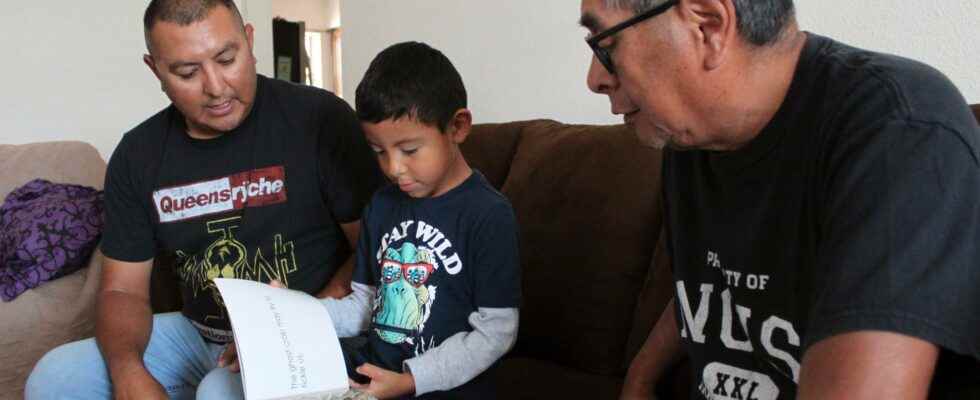Published: Less than 30 min ago
full screen
Next
Darryl Madalena is one of those who have become involved in the fight to get more of the indigenous population of the United States to want to donate their organs for transplants. Here with son Micca Madalena and close relative Myron Ami.
1 of 2Photo: Susan Montoya Bryan/AP/TT
Heart-sick boy Greyson Parisien’s time on earth was not long. But he leaves behind a significant legacy – an increased awareness of organ donation among America’s indigenous population.
Greyson Parisien was born with a heart defect, but thanks to a heart transplant, he was finally able to leave the hospital – where he stayed for an entire year – and return home to the Turtle Mountain Reservation in North Dakota. As part of the indigenous Chippewa people, he was particularly vulnerable, as the rate of organ donation among indigenous people is much lower than among those of other ethnic backgrounds in the United States.
Loved the movie Frost
Pneumonia ended Grayson’s life in 2019, when he was only 21 months old. Through social media, community residents have been able to follow Greyson and get to know the hard-fighting little guy who loved the music from the movie Frost and hearing his dad play the guitar. Grayson’s fate also led to his loved ones taking action to raise the issue of organ donation among Indigenous people.
– It made me realize that there must be more donors, says Grayson’s grandmother Joan Azure, who is one of the driving forces behind the initiative.
The closer genetically the recipient is to the organ donor, the better the prospects for the transplant to succeed. But cultural aspects, traditional beliefs and other reasons have put sticks in the wheels, explains Darryl Madalena who works on issues related to organ donation.
The conviction that man, body and soul, enters this world as a whole, and must also leave it in the same way, is strong in his home district of Jemez Pueblo in New Mexico.
– This is what we are taught, and this is how the beliefs still look, says Darryl Madalena to the AP news agency.
Great need for kidneys
Through information, increased knowledge and better access to care, Darryl Madalena hopes that this will change. Not least because a large part of the United States’ indigenous population suffers from diabetes, which makes the need for kidney transplants particularly great among this group. As much as a quarter of the indigenous population has diabetes, says Susan Mau Larson of Life source, an organ donation network.
Greyson’s fate has also resulted in the Chippewa population taking the initiative to have a box on their ID documents, which can be ticked if you want to donate your organs.
And at the same time, the memory of Greyson is kept alive in the form of ceremonies of various kinds among the Chippewa. They hope that the awareness and willingness to donate their organs will spread to other groups within the indigenous population of the United States.
– Even when he had the hardest things, his smile shone and he brought happiness and brightened the lives of everyone he came into contact with. And with his shining light, he became a guide for many, with his courage and his strength, says Joan Azure.
Facts
Background: Transplants in the USA
Anyone in the United States can become an organ donor, regardless of age. The medical status at the time of a donor’s death determines which organs and tissues can be considered for donation.
About 105,200 people in the United States are waiting for a transplant. About 1 percent of these belong to the indigenous population, which constitutes just under 3 percent of the total population of the United States.
Between January and November this year, over 19,400 donors were registered. Almost 40,000 organ transplants were performed during the same period, in 2022.
As soon as an organ donor is identified as deceased, the computer system ticks into action to find suitable recipients, who are ranked according to various criteria on a waiting list.
Parameters such as blood type, weight and medical factors play a decisive role in the assessment. Geography and distance are also important – those who are in hospital closer to the organ donor have a greater chance than those in need in hospitals further away. This is because the transplants have the greatest chance of success if the transport distance is not so long.
Sources: United network for organ sharing (UNOS) and others.
Read more
